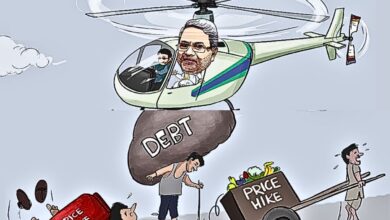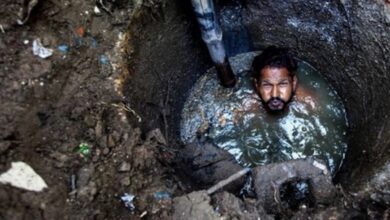
The economic recovery is slowly losing its pace in India. Several lockdowns imposed in various states and many other restrictions on business activities are togetherly showing their effect on the economy.
Merely 9% GDP growth is expected for the current fiscal year, as several experts suggested. A recent survey conducted by Care Ratings said that nearly 80% of people are complaining as investments and non-essential businesses are affected due to the COVID-19 pandemic.
“As the COVID deaths continue to soar in huge numbers irrespective of the dip in cases, the economic growth is losing its steam. 7 out of 10 respondents are expecting the GDP growth to touch the low of 9% or below FY22. According to the survey, the majority of the respondents expect that the lockdowns announced by several states will remain in place until the end of May.
In total, 54 percent of the people who took part in the study did not believe that the closure was a solution to the current state of COVID-19 in the country, he said. More than three-quarters of respondents feel that the current closure is not as strong as last year’s threshold, he adds.
CRISIL, one of the most renowned rating agencies, also said that the country’s GDP would be below 9.8% in the current scenario, assuming that there won’t be another wave of the virus. If there will be a third wave of COVID, India will witness an extreme economic crisis as the GDP dips as low as 8.2%.
No major effect on India’s GDP despite PM Modi’s “Make In India” emphasis
The unemployment rate in India was already a ht a high of 6% even before the pandemic. After the COVID-19 hit India, more than 70 lakh people lost their jobs, several businesses shut, and the unemployment rate touched as high as 9% in urban areas. In 2017, a joint report by the Indian Institute of Management, Ahmedabad, and job search company Monster India, found that manufacturing activities in sectors such as automotive, chemicals, chemicals, metals, cement, rubber, and electrical machinery were some of the lowest-paid jobs in India.
The total hourly wage in the manufacturing sector, according to the report, was Rs 254.04, about 9% less than the combined gross domestic product of India (Rs 279.7). The report also said that at least 93% of the 20,350 respondents had a three-year diploma in technical education from polytechnic. 
Forget about the private sectors, our PM did not care much to facilitate vacancies in the government sector for the youth. India has emphasized the manufacturing sector several times, but it’s just a false claim. Increasing job opportunities, but not increasing the pay scale won’t do much. People are struggling to manage their daily expenses, filing humongous amounts of GDP and GST on every goods and service.
But our ‘concerned’ PM is busy in the Central Vista project rather than focusing on crucial things like providing employment and increasing the medical infrastructure of the company. “Salary data shows that earning levels are low in performance,” Kapoor told IndiaSpend. “This is because most of the work is done in the informal sector. The real wage for workers with a blue-collar in the production line has been low since 2000-2001 even in the organized manufacturing sector as [analysis] of the annual data Survey of Industries.”




